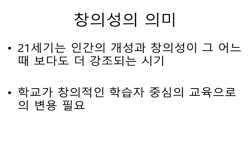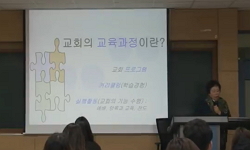The purpose of this study was to find out if there is a relationship between intrinsic and extrinsic religious motivation religious concept. In general psychology, motivation is defined as the interaction between insticvtive desire ans mental consciou...
http://chineseinput.net/에서 pinyin(병음)방식으로 중국어를 변환할 수 있습니다.
변환된 중국어를 복사하여 사용하시면 됩니다.
- 中文 을 입력하시려면 zhongwen을 입력하시고 space를누르시면됩니다.
- 北京 을 입력하시려면 beijing을 입력하시고 space를 누르시면 됩니다.
https://www.riss.kr/link?id=T4662280
- 저자
-
발행사항
서울 : 삼육대학교 대학원, 1992
- 학위논문사항
-
발행연도
1992
-
작성언어
한국어
- 주제어
-
DDC
230
-
발행국(도시)
서울
-
형태사항
113 p. : 삽도, 설문지 ; 27 cm
- 소장기관
-
0
상세조회 -
0
다운로드
부가정보
다국어 초록 (Multilingual Abstract)
In general psychology, motivation is defined as the interaction between insticvtive desire ans mental consciousness. In religious psychology, religious motivation is defined as the religious desires, the intricsic powers and the spiritual values shich complete the integration the personality and which tend toward the Absolute.
For Christians who have intrinsic motivation, the relationship with God becomes the supreme value and they purely devote their lives to God. On the contrary, for the Christians who have extrinsic motivation, the desire toward God has a tendency to satisfy their instinctive needs and they abuse religion as one way to fulfill their needs.
Religious motivation is built up through the interaction between the cognition of religion, and instinctive desire.
To determine the relationship between the intellectual concept and the intrinsic and extrinsic religious motivation, a questionnaire was developed and distributed to 371 Hangook and Seoul Samyook High School students that were over 18years old. The results were analyzed using t-tests, F-tests and x2(chi-square) with the help of the SPSS computer program. The results are as follow:
1. Students who recognize the concepts of the Scripture in a positive way have intrinsic religious motivation.
2. Students who recognize the concepts of the Scripture in a way have extrinsic religious motivation.
3. students who graduated from Sahyook Middle Schools have a greater tendency to demonstrate extrinsic religious motivation who graduated from other Middle Schools.
4. Students born to Christian parents are more likely to have intrinsic religious motivation than those who have lived as Christians less than five years.
These result suggest that there is an interrelationship between the intrinsic and extrinsic religious motivation and the Biblical perception. Mature religious motivation may be built up by change of one's cognition through religious motivation education.
This study recommends that the changes toward mature religious motivation be as follows:
1. Religious motivation is built up through the interaction between the cognition of religion, and instinctive desires. This study describes describes the former as "
Intellectual motivation" and the later as "Internal motivation"
2. In religious motivation education, the teaching method that builds up intellectual motivation help one to think by oneself. This may be achieved through structural learning which step by step enlarges and deepens the basic concepts about the Scripture, byt not through a fragmentary way and learning through cramming.
3. The method of the religious motivation education for intricsic motivation should be efficient and practical education providing the learner with the opportunity to experience repentance or religious desire to apply his intellectual cognition in real religious life, and to study the religious life by himself.When one realizes the fact that concepts from the Scriptures fit into life, he naturally begins to desire the Words from the Scriptures and the religious life. Religious motivation education is then reconciled with intellectual and practical education.
The purpose of this study was to find out if there is a relationship between intrinsic and extrinsic religious motivation religious concept.
In general psychology, motivation is defined as the interaction between insticvtive desire ans mental consciousness. In religious psychology, religious motivation is defined as the religious desires, the intricsic powers and the spiritual values shich complete the integration the personality and which tend toward the Absolute.
For Christians who have intrinsic motivation, the relationship with God becomes the supreme value and they purely devote their lives to God. On the contrary, for the Christians who have extrinsic motivation, the desire toward God has a tendency to satisfy their instinctive needs and they abuse religion as one way to fulfill their needs.
Religious motivation is built up through the interaction between the cognition of religion, and instinctive desire.
To determine the relationship between the intellectual concept and the intrinsic and extrinsic religious motivation, a questionnaire was developed and distributed to 371 Hangook and Seoul Samyook High School students that were over 18years old. The results were analyzed using t-tests, F-tests and x2(chi-square) with the help of the SPSS computer program. The results are as follow:
1. Students who recognize the concepts of the Scripture in a positive way have intrinsic religious motivation.
2. Students who recognize the concepts of the Scripture in a way have extrinsic religious motivation.
3. students who graduated from Sahyook Middle Schools have a greater tendency to demonstrate extrinsic religious motivation who graduated from other Middle Schools.
4. Students born to Christian parents are more likely to have intrinsic religious motivation than those who have lived as Christians less than five years.
These result suggest that there is an interrelationship between the intrinsic and extrinsic religious motivation and the Biblical perception. Mature religious motivation may be built up by change of one's cognition through religious motivation education.
This study recommends that the changes toward mature religious motivation be as follows:
1. Religious motivation is built up through the interaction between the cognition of religion, and instinctive desires. This study describes describes the former as "
Intellectual motivation" and the later as "Internal motivation"
2. In religious motivation education, the teaching method that builds up intellectual motivation help one to think by oneself. This may be achieved through structural learning which step by step enlarges and deepens the basic concepts about the Scripture, byt not through a fragmentary way and learning through cramming.
3. The method of the religious motivation education for intricsic motivation should be efficient and practical education providing the learner with the opportunity to experience repentance or religious desire to apply his intellectual cognition in real religious life, and to study the religious life by himself.When one realizes the fact that concepts from the Scriptures fit into life, he naturally begins to desire the Words from the Scriptures and the religious life. Religious motivation education is then reconciled with intellectual and practical education.
목차 (Table of Contents)
- 제1장 서론
- A. 문제의 진술 1
- B. 연구의 목적 3
- C. 연구의 방법 및 절차 4
- D. 연구의 제한 및 범위 4
- 제1장 서론
- A. 문제의 진술 1
- B. 연구의 목적 3
- C. 연구의 방법 및 절차 4
- D. 연구의 제한 및 범위 4
- E. 용어의 정의 4
- 제2장 동기형성의 개념에 관한 선행연구
- A. 인간의 행동과 심리학 6
- B. 동기형성과 심리학 8
- 1. 본능론의 동기형성 8
- 2. 인식론과 동기형성 10
- 3. 성취동기 11
- C. 동기형성의 심리학적 분석 12
- 제3장 동기형성의 종교심리학적 분석
- A. 종교심리학적 동기형성 14
- 1. 종교의 정의와 인격 16
- 2. 종교적 욕구 19
- 3. 영적인 가치 20
- 4. 방향성 22
- B. 성숙한 종교심 25
- 1. 종교심의 본질 29
- 2. 성숙한 종교심의 속성 32
- 3. 성숙한 종교심의 측정 40
- C. 종교적 동기형성의 구분 42
- 1. 외재적으로 동기화된 종교심 46
- 2. 내재적으로 동기화된 종교심 47
- 3. 무조건적 종교배타성 48
- 4. 무조건적 종교선호성 49
- 제4장 기독교교육에 있어서의 동기형성
- A. 학습과 동기형성 51
- 1. 행동주의 학습이론 52
- 2. 인지주의 학습이론 53
- B. 기독교교육과 종교적 동기형성 57
- 1. 종교적 동기와 학습 59
- C. 종교적 동기교육을 위한 교육방법 62
- 1. 기독교 교육의 원천 62
- 2. 지식교육의 문제 64
- 3. 지적 동기형성을 위한 교육방법 66
- 4. 내적 동기형성을 위한 교육방법 69
- 제5장 종교적 동기형성과 성서적 개념과의 관계조사연구
- A. 조사연구의 방법 74
- 1. 연구의 목적 74
- 2. 연구의 가설 74
- 3. 연구의 대상 75
- 4. 조사의 도구 76
- 5. 자료의 처리 77
- B. 연구의 결과 및 분석 77
- 제6장 요약, 결론 및 진언
- A. 요약 및 결론 86
- B. 진언 90
- 참고문헌 91
- 부록(설문지) 107
- 영문초록 111











